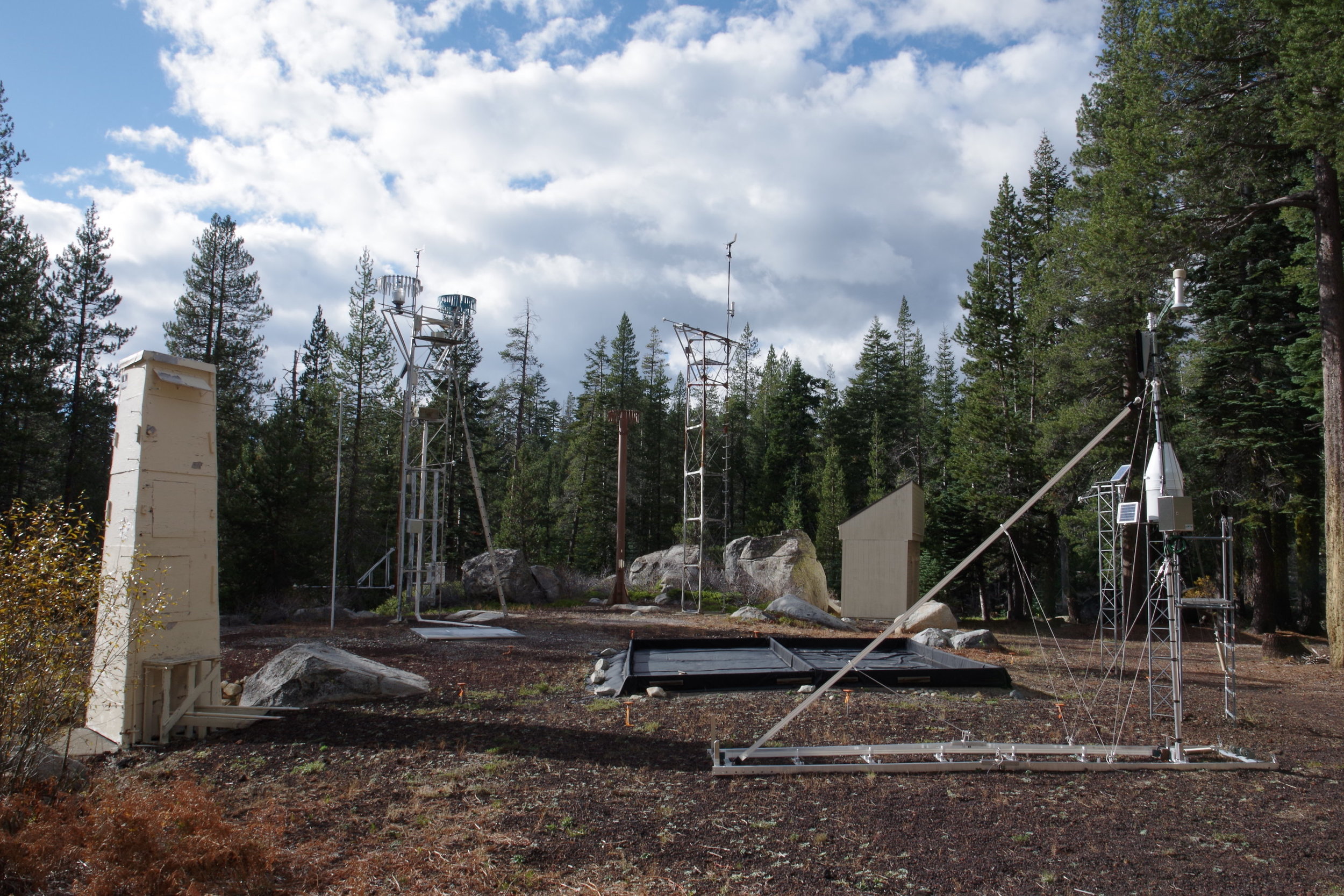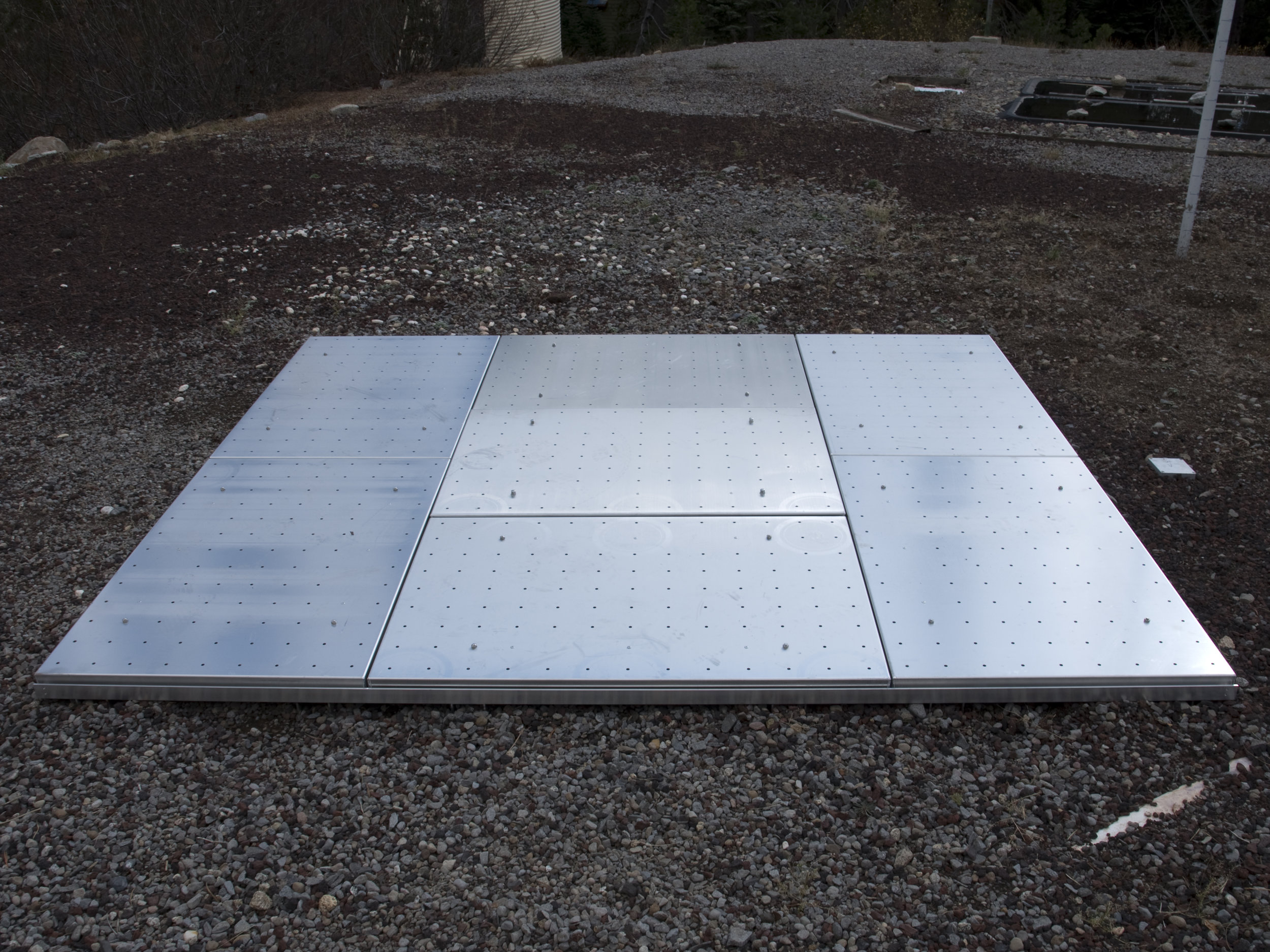SNOW LAB
Confluence: streamwater, handwriting and urban curbs
November, 2015
On my way back from writing archives and route design research in Reno last month I made a visit to the University of California's Snow Laboratory a few miles west of Donner Pass. A sculpture garden of experimental instruments poised for a hopeful winter, their main purpose is to know the water content of snow. Researcher and site caretaker Randall Osterhuber kindly discussed their methods, tools and developing technologies, such as detecting changes in cosmic particles as they pass through a snowbank. But wooden yardsticks, he said, are also still essential.
Vital signs: a scale for the weighing of snow.
In the Sierras, snow is a frozen reservoir, melting to feed waterways as temperatures rise. Field measurements of Sierra snow have been meticulously made by water company engineers and university scientists since the early 1900's but new tools like tree ring comparisons allow much longer perspectives on climate trends and variability.
Randall told me about cloud seeding programs to force precipitation, and how water agencies fight over whose side of the ridge should get the rain. I suddenly saw the carefree wonderment of clouds in a new way: as resources ripening for harvest. Do all things have such sided-ness - one of resonance, fantasy and symbolism, and one of quantity and exchange? Can both perspectives be held at once?
Meanwhile work on Confluence is continuing nicely - I've just received cut samples of the Traffic Marking Tape I hope to use. Here a fragment of the word 'distribution' is adhered as a quick test on the driveway in front of my house; the 'd' is about five inches high and the cursive from WR Rodgers, a Northern Irish poet whose handwriting I turned into a font last summer. I will say more about the writing and font creation in future posts.



